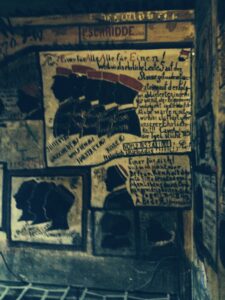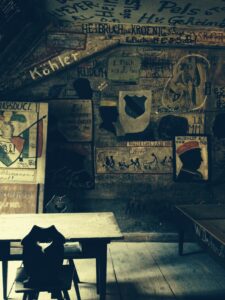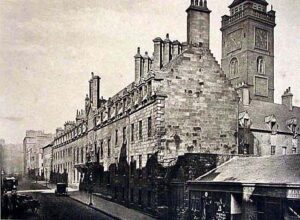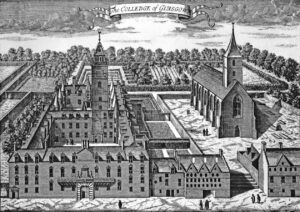All visitors to the old buildings of the University of Heidelberg visit the University Prison. it was established in the late eighteenth century and operated until 1914. it is filled with fascinating drawings, paintings, and graffiti.


Recent research on two Russian students in Glasgow in the eighteenth century has drawn my attention to the use of the tower in the old buildings of the University of Glasgow to imprison students, if perhaps only in a token way. In late 1766, one of the Russians had a quarrel with John Anderson, the irascible, quarrelsome, and difficult, if brilliant, Professor of Natural Philosophy. The Russian concerned, Symeon Efimovich Desnitskii, considered himself insulted, and consulted a fellow law-student, Alexander Fergusson of the family of Fergusson of Craigdarroch, who advised him to insult Anderson. Desnitskii accordingly pulled Anderson’s wig off in the College Court. The University investigation was led by the Rector, the Earl of Selkirk. There were judged to be mitigating circumstances and Desnitskii was required to apologise; Fergusson was ordered to be “conducted immediately to prison by the Bedal for a little time”. He accepted this and it was apparently for a few minutes only; Fergusson, a future advocate, stated later he knew that the University had no right to “to imprison me or any man in their steeple”. The story is amply explained in A. H. (Archie) Brown’s discussion of the two Russian students in Glasgow, in a recent paper in Canadian-American Slavic Studies (2024) and more fully in his chapter “Adam Smith’s First Russian Followers” in Skinner and Wilson, Essays on Adam Smith (1976).
What struck me on rereading Archie Brown’s account was the use of the steeple as a prison. The buildings on the High Street survived into the days of photography, notably the photographs by Thomas Annan, allowing us to know the beauty and interest that was lost (through the replacement at Gilmorehill is magnificent). In old prints and photographs the steeple is very obvious, running between the inner and outer courts; it is particularly clear in the famous engraving by John Slezer. The tollbooths (town houses) of Scottish burghs historically nearly always had a steeple or tower that traditionally served as a prison. It is interesting to see that in the University of Glasgow this also seemed the obvious practice.



